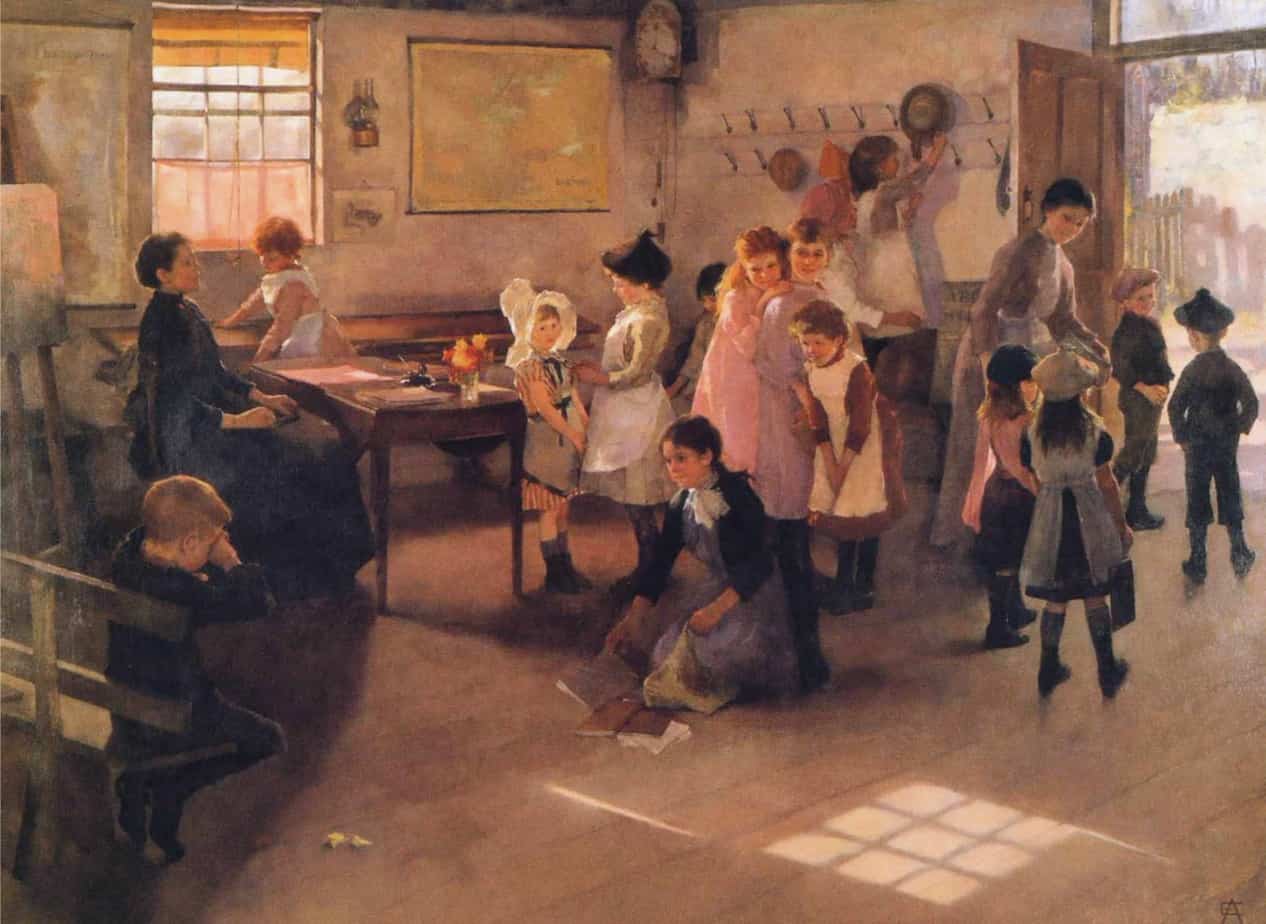Teachers in children’s stories can be mentors, opponents, fake opponents, or very much background characters. In young adult literature, teachers can (problematically) be love opponents.
Why is it that English, drama and music teachers are most often recalled as our mentors and inspirations? Maybe because artists are rarely members of the popular crowd.
Roger Ebert
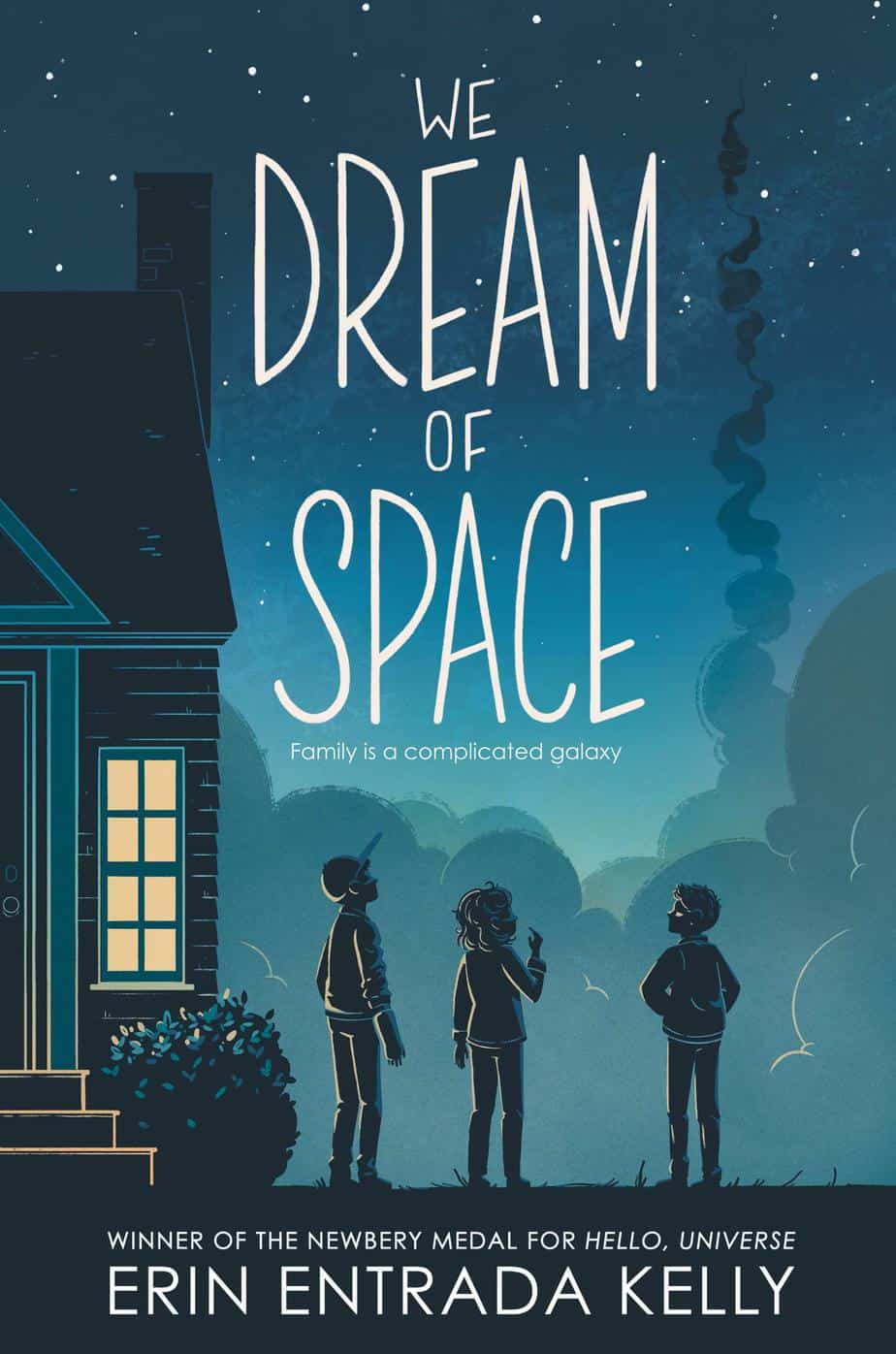
It’s January 1986. The launch of the Challenger is just weeks away, and Cash, Fitch, and Bird Nelson Thomas are three siblings in seventh grade together in Park, Delaware.
Cash loves basketball, Dr. J, and a girl named Penny; he’s also in danger of failing seventh grade for a second time. Fitch spends every afternoon playing Major Havoc at the arcade and wrestles with an explosive temper that he doesn’t understand. And Bird, his twelve-year-old twin, dreams of being NASA’s first female shuttle commander, but feels like she’s disappearing.
The Nelson Thomas siblings exist in their own orbits, circling a tense, crowded, and unpredictable household, dreaming of escape, dreaming of the future, dreaming of space. They have little in common except an enthusiastic science teacher named Ms. Salonga—a failed applicant to the Teacher in Space program—who encourages her students to live vicariously through the launch. Cash and Fitch take a passive interest, but Bird builds her dreams around it.
When the fated day arrives, it changes everything.
A BRIEF HISTORY OF TEACHERS IN CHILDREN’S STORIES
THE EARLIEST TEACHERS IN STORIES
The teacher archetype is related to the traditional ‘wise old man’ and ‘wise old woman’ archetype seen in many older stories. The teacher is the modern equivalent of these characters, dishing out advice to help the main character get through the story.
TEACHERS IN BOOKS FOR YOUNGER READERS
Most picture books are today published for preschoolers, and in stories which include schools, the function of the story is to reassure preschoolers that school will be a happy, welcoming and nurturing place, full of fun and joy, where new friends will be made. The teachers are most often smiling and welcoming, as almost all teachers of kindergarten children are in real life.
In books from the First Golden Age of Children’s Literature featuring girls, the main characters who become teachers learn to humanise their childhood images. (See Anne of Green Gables, Little House on the Prairie). The good teacher has no faults. The bad teacher has no redeeming qualities.
In the 1970s and 80s, fictional teachers who broke convention tended to leave their jobs/get dismissed at the end of the story, but today’s non-conformist teachers tend to be a bit more successful in staying in their jobs.
TEACHERS IN YOUNG ADULT FICTION
In young adult novels published before 1980 favourable treatment of teachers outnumbered the unfavourable.
Contemporary young adult literature sometimes juxtaposes a ‘good’ teacher against a ‘bad’ one, enforcing a good/bad binary view. Other young adult novels challenge this binary and achieve subversion, or even humanise the teacher.
Modern young adult novels feature more successful non-conformist teachers. Teachers who rebel against norms are seen as the most favourable.
Iconic teachers in films often leave their schools at the end of the movie, sometimes without wanting to go. But modern iconic film teachers are more likely to keep their jobs.
MCLAREN’S THREE TEACHER ARCHETYPES
Education theorist Peter McLaren said in 1988 that the ideal teacher plays the part of the ‘liminal servant’. Less effective teachers fit the mould of the ‘hegemonic overlord’ or ‘entertainer’.
In the first two roles students are spectators and don’t participate. The knowledge they gain is outside lived experience. These classrooms will look like teachers pretending to teach and students pretending to learn.
The Entertainer Teacher
a propagandist or evangelist for dominant cultural, economic or ethical interests. Suppresses individuality and conditions students for sameness.
The Hegemonic Overlord Teacher
Information is transmitted perfunctorily, like it’s a bit of food pushed under a cell door. This teacher follows lessons strictly and mordantly by the book, and not interested in student empowerment. Standout example: The Trunchbull in Matilda by Roald Dahl
The Liminal Servant Teacher
The ideal. Empowers students to question domination and their own assigned places. Students respond with immediacy or purpose and are the primary actors within the ritual of instruction. This is student-based learning. Students will be involved, emphasis will be off the chalk-and-talk. Teachers remove obstacles to let students let through active questioning of dominant ideologies. Lessons will be in a flow state with students totally involved. These teachers are social activists and spiritual directors. The teacher is a co-participant or co-creator. Standout example: Mrs. Sauceda in The Jumping Tree by René Saldaña, Miss Honey in Matilda. (The self-sacrificing, inspirational teacher who almost martyrs herself for the sake of the students is heroic but not sustainable in a long-term teaching career.)
OTHER TEACHER ARCHETYPES
The Kindly But Frustrated Teacher
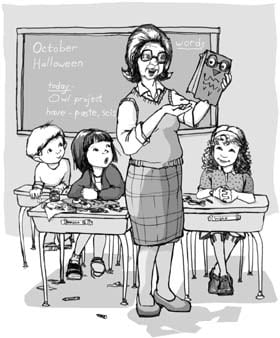
Think of Ramona Quimby’s middle-aged teacher, who is obviously a kind-hearted person but who is regularly exasperated by Ramona’s failure to conform. This is usually a female teacher, perhaps in her 40s or 50s, who we are to imagine has been dealing with children over many, many years.
‘Mrs’ from the Junie B. Jones series is also a kindly but exasperated type.
The Kindly But Beginner Teacher
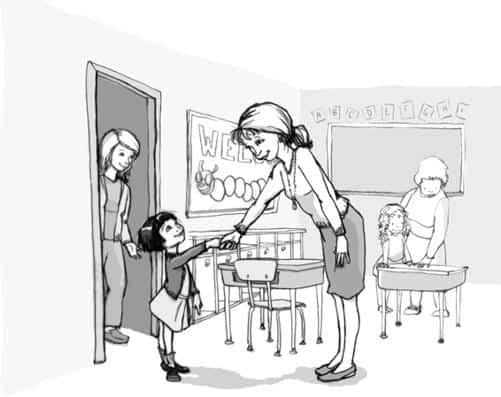
Ramona’s first teacher, however, is brand new to the school. Miss Binney. Miss Binney’s lack of experience leads to a different kind of comedy. The kindergarten children, most notably Ramona and Howie, misinterpret Miss Binney’s words which leads to chaos. Had Miss Binney been a more experienced teacher she would have made Ramona the wake-up-fairy, but instead she picked the goody-two-shoes who needed nothing in the way of encouragement to behave well.
For the dual audience we have Edna Krabapple who is a more cynical version again.
Bad Ass Teachers
- Mad-Eye Moody would be the straightest example. Both, the real Moody, even though he never gets a chance to actually be a badass while a teacher, and the fake Moody, who manages to do a great job of impersonating a badass.
- Dumbledore gets special mention, as the one and only time he rebuked Professor Umbridge was when she started physically attacking one of his students. And the one and only time he ever got angry with Harry Potter was when Harry thoughtlessly suggested that Dumbledore was leaving the school unprotected. There is also his Unstoppable Rage when a bunch of Dementors showed up at a Quidditch match.
- As does McGonagall. Mess with her, and you get a disapproving glare. Mess with one of her students or colleagues, and she takes four Stunners to the chest at age seventy and bounces back with only a walking stick to show she was hospitalized for a month.
- Then, for an encore, she and Slughorn help an Auror take on TOM RIDDLE HIMSELF and live to tell about it.
- Let’s not forget Severus Snape. He was a spy for Dumbledore, could fly without a broom, and during his spying days he lied to Voldemort’s FACE for years. And he was an innovator, too. He is in fact the Half-Blood Prince who was behind a number of innovative—and sometimes nasty—spells. And when he actually does teach, once you get past his Jerkass-ness, he is focused; he teaches with a purpose.
- Miss Wilson in the Chalet School series. Leading a group of kids to safety through a secret passageway, with a gang of angry Nazis in hot pursuit? I’d say that’s pretty Badass. Doubles as a Mama Bear moment.
- Mr McCarthy in Me And Earl And The Dying Girl is covered in tatts and for part of the story we think he eats soup with drugs in it. He has the appearance of a badass teacher but is actually pretty conventional, just with a smart-alec comeback for whatever his students say to him.
The Stern Teacher
Minerva McGonagall from Harry Potter. So strict that she tends to subtract more points from her own students when they do wrong because she holds them to higher standards. Madame Hootch is another, mostly forgotten example from Harry Potter. Since her subject (broom-flying) is so dangerous, the penalty for breaking rules in her class is expulsion. Not point loss or detention. Expulsion.
(Subversion: Muriel Spark’s The Prime of Miss Jean Brodie subverts the trope all to hell, specifically the “tough but fair” part. Miss Brodie deliberately designates one of her girls as a “stupid” victim, marking her for life. She’s a charming, intelligent, and vivacious fascist.)
In Stephen King’s first novel, Carrie (1974) we have Ms Desjardin. If you’ve seen either of the film adaptations you’ll notice the teacher from the book is more hardened than as played on screen.
She slapped Carrie smartly across the face. She hardly would have admitted the pleasure the act gave her, and she certainly would have denied that she regarded Carrie as a fat, whiny bag of lard. A first-year teacher, she still believed that she thought all children were good.
Downright Nasty Teachers
The teacher characters in the Captain Underpants series, however, are rarely nice. In fact, they’re downright nasty, with school principal Mr Krupp playing the role of villain (along with Professor Tinkletrousers and many others).
‘Most of the teachers I had in elementary school, or primary school, and in high school were very vicious and cruel people,’ says Pilkey. ‘However, there are some good grownups in the Captain Underpants series and that’s the parental figures.’
Dave Pilkey, author of Captain Underpants, from interview at ABC
Principal Trunchbull of Matilda, reputedly used by Roald Dahl as a surrogate for all the cruel tutors he had over the years. Her treatment of children, as Matilda deduces, is deliberately so extreme and outlandish that no kid’s parents will believe the truth even on the off chance any child got up the courage to tell.
Captain Lancaster in Danny, the Champion of the World is a more realistic example. He’s obviously based on one of Roald Dahl’s actual teachers, Captain Hardcastle, described in his autobiography Boy.
It’s bad enough is you have a Sadist Teacher, but misery ensues if you have a Sadist (Vice) Principal who doesn’t just kick you around, but he kicks all the students. That’s right, meet Vice Principal Nero who runs a boarding school in A Series of Unfortunate Events. Not only he was generally mean to the students and tortured them with hours of awful violin playing, but he also had a bunch of outrageous and stupid punishments: For example, if you went to the office building and you weren’t an adult you’d have to eat your food without a fork and knife. And if you missed a class or got there late you weren’t allowed to have a glass from which to drink, you had to lick your milk from the tray. And if you didn’t go to see him play his violin, he’d force you to buy him candy and watch him eat it. I don’t want to even think what would happen if you’d skip a class.
Lucy Maud Montgomery’s heroines almost always fall victim to this teacher. Probably the worst offender was Miss Brownell, of Emily of New Moon. She takes Emily’s manuscripts in class and reads Emily’s poems to the rest of teh class in a mocking voice, with snide comments, occasionally accusing Emily of passing off other authors’ works as her own. When Emily refuses to apologise for writing poetry in class, Miss Brownell comes to New Moon and tries to convince Emily’s guardian to force the girl to kneel to Miss Brownell and apologize.
Mrs. Gorf in the first book of Louis Sachar’s Wayside School series turns her students into apples when they do anything wrong. This includes sneezing in class. The students manage to outsmart her by forcing her to turn them back into humans and tricking her into turning herself into an apple, which Louis then unknowingly eats.
Wendy Nogard in Wayside School Gets a Little Stranger is a more subtle (but even more insidious) example: while she appears to be a sweet, considerate teacher, she uses her mind-reading abilities to humiliate and turn her students against each other—all without ever compromising her “nice teacher” facade. An example of this is when, during a homework-checking session, she deliberately calls on the one student who has the incorrect answer for each question, and using the resulting slew of wrong answers to retract her promise of no homework for that day. Every student ends up hating all the others for being idiots who cheated him/her out of a homework-free afternoon, even though in reality none of them missed more than two questions on the assignment.
Sexual Interest Teacher
Though more common in YA, we also have teachers such as Miss Edmunds in Bridge To Terabithia by Katherine Paterson:
The somewhat unconventional and controversial music teacher, whom Jesse greatly admires. She invites Jess to go to the Smithsonian Museum, which leads Leslie to go to Terabithia by herself. As a result, Leslie is alone when she falls from the rope and drowns. She is played by Annette O’Toole in the 1985 film and Zooey Deschanel in the 2007 film. In the 1985 film, Mrs. Edmunds seems to take the role of Mrs. Myers. She tells Jess the story of a relative dying after Leslie dies instead of Mrs. Myers, and she, instead of Mrs. Myers, gives the homework assignment of watching a show on television.
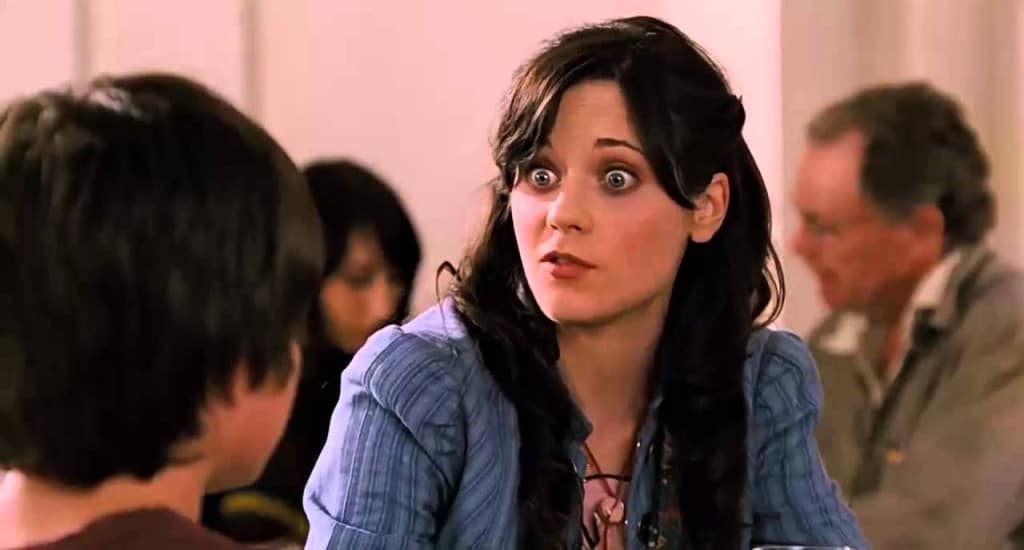
Zooey Deschenel also plays the Hippie Teacher.
From Holes, we have Miss Katherine, whom many of the townfolk was after. (From the Hot Teacher page at All The Tropes) Another hippie teacher would be Barbara Finney from The Cat Ate My Gymsuit by Paula Danziger.
Falling in love with your teacher is a solid way for a writer to keep lovers apart for the entire length of a story. This is harder and harder these days, where in real life at least romance is permissible across cultural, socio-economic and geographic boundaries. People can sleep with each other without much in the way build up. The student-teacher relationship recreates the 1700s erotics of abstinence Jane Austen depicted so well (and which, more recently, Stephenie Meyer utilised in her vampire series.)
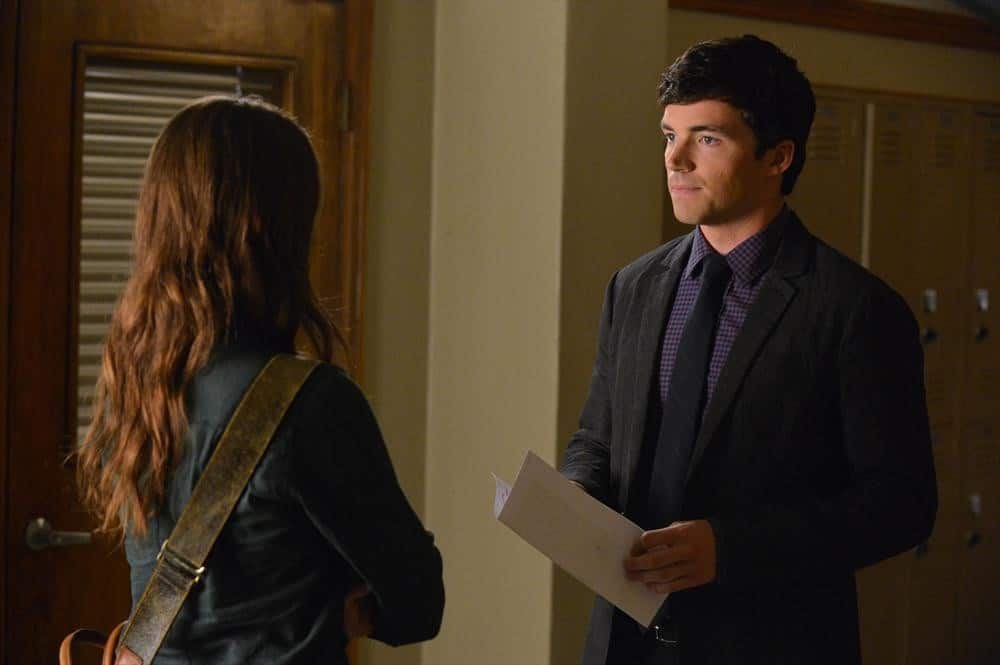
TEACHERS IN REALISTIC NOVELS
The realistic novel “emphasises truthful representation of the actual”. ‘Realistic’ fiction supposedly corresponds closely with the real world. In a realistic novel, readers bring an expectation that representations of humanity will somewhat mimic real, rounded humans.
When teachers in realistic novels are presented in an unrealistic way, this undermines the realism of the story.
GOOD TEACHER/BAD TEACHER IN MODERN YOUNG ADULT LITERATURE
The more favourably depicted teachers help students develop their identities and resist dominant and oppressive educational paradigms; the less favourably perceived teachers often represent the authority against which the adolescents and good teachers rebel.
Beyond a Good Bad Binary
Mostly, teachers are adults who get in the way of adventure and independence, so the author uses teachers as background furniture then disappears them.
If you meet a bunch of teachers on your first day in the new school, only pay attention to the one who puts you in a group project with a handsome stranger. You’ll never see the rest again.
@broodingYAhero
YOUNG ADULT NOVELS MAKING USE OF THE GOOD/BAD BINARY
- Anne of Green Gables — Miss Stacey replaces an ineffective, uninspiring, authoritarian male teacher who plays (inappropriate) favourites.
- The Teacher’s Funeral by Richard Peck (2004) — set in 1904. Weaker teacher Myrt Arbuckle dies, succeeded by the more effective Tansy Culver.
- Scat by Carl Hiaasen (2009) — Similar to The Petition, students assume teachers who mark hard must be bad teachers. Hiaasen inverts reader expectations of a good/bad dichotomy, in which the demanding teacher, Mrs Bunny Starch, is the effective one. In contrast, Dr Wendell Waxmo is a comedic caricature of an unqualified, eccentric substitute. He is basically an extreme Entertainer Teacher archetype.
Miss Nelson is Missing Harry Allard James Marshall 1977, in which a regular classroom teacher goes missing and is replaced by someone who looks like a witch.
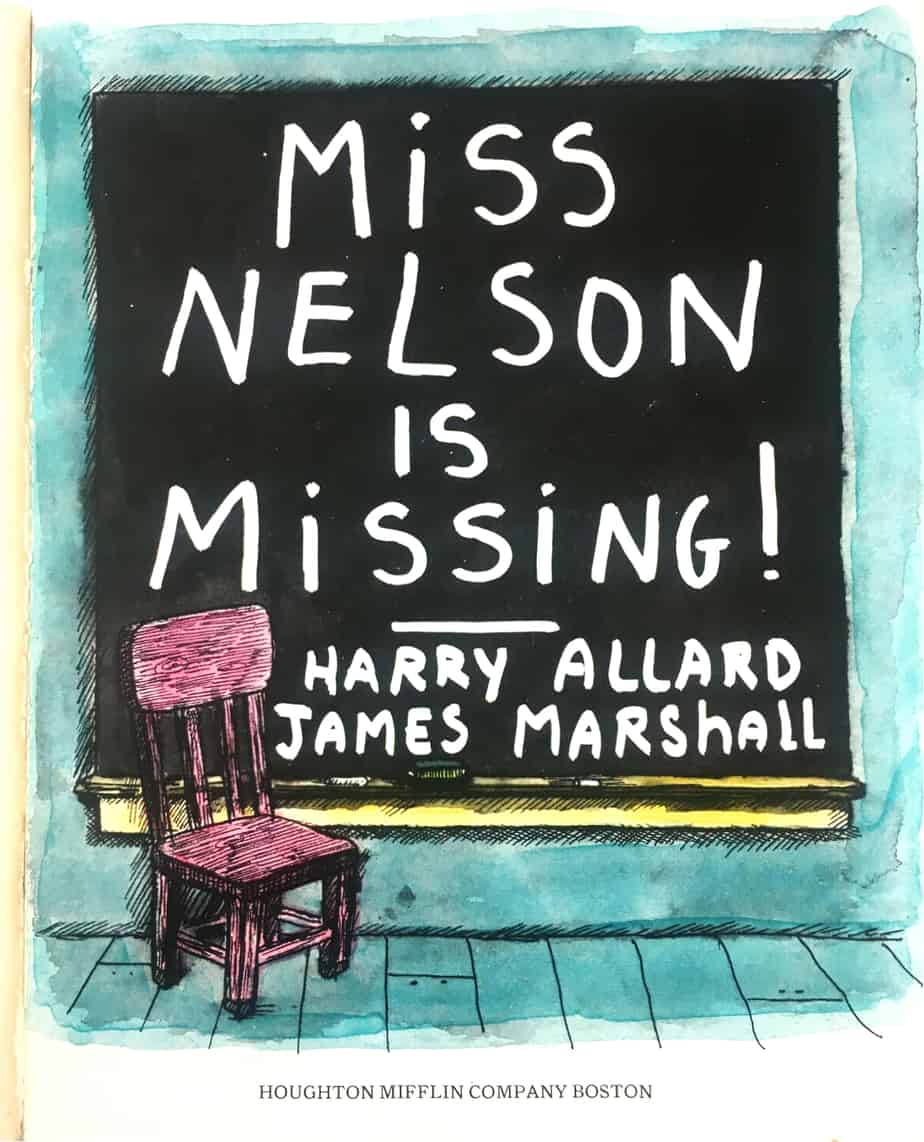
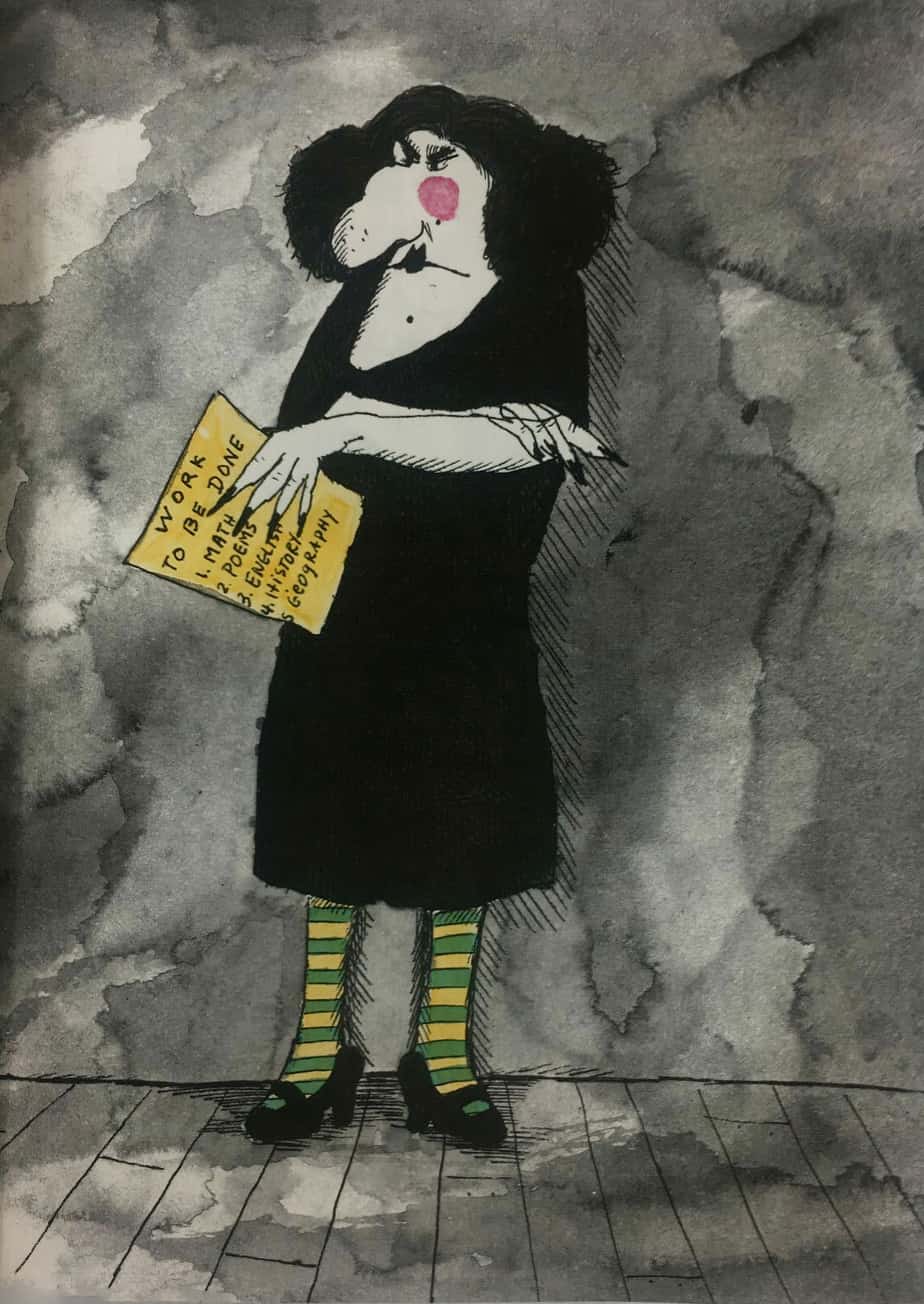
- The Sledding Hill by Chris Crutcher (2005) — English teacher Mr. Sanford Tarter represents the hegemonic overlord type. Mr. Tarter intrudes excessively in the life of Eddie. The other English teacher in The Sledding Hill, Ms. Ruth Lloyd gives students choice and power. Crutcher’s own ideology is no doubt influenced by the fact that his books have been widely banned by Mr Tarter types. Chris Crutcher’s coaches fall into good and bad categories. The good coaches let kids figure out what they need for themselves and provide them with backup to let them make their own discoveries.
- Speak by Laurie Halse Anderson (1999) — Mr Freeman is a shamanistic archetype and gifted artist who models what he expects of students and exposes the reality of the institutional power structure. But Mr Neck the social studies teacher is bigoted and unprofessional.
- The Petition by Anne Schraff (2001) — Mr Pedroza is the best teacher and initially seems like a hegemonic overlord but turns out to be a false opponent ally and liminal servant. In contrast, Ms Corey is both Entertainer and Hegemonic Overlord. Schraff subverts archetypes by challenging the reader’s first impressions of these teachers. The young, relatable funny teacher who gives out easy grades is proven to be the less effective teacher. Superficial niceness covers bigotry.
The problem with the good/bad binary in a realistic novel is that teachers are dehumanised. Humans are more nuanced. Characters such as Matilda’s Trunchbull are clear comedic archetypes, but in a realistic novel, shouldn’t the characters be presented realistically to achieve the effect they’re going for?
MOVING BEYOND THE BINARY
The most interesting characters are not morally binary at all. To that end, some authors assign good and bad attributes to the same teacher.
- Standing Up to Mr. O by Claudia Mills (1998) — the biology teacher Mr. O’Neill embodies all three of McLaren’s models depending on the moment.
- No More Dead Dogs by Korman (2000) — The teacher changes from mixed good/bad to good, and has their own character arc alongside the students, with the effect of humanising teachers for readers. Everyone’s attitudes change for the better. This is achieved via narration from various perspectives including the teacher’s own journal entries and memos to himself.
AMERICAN TV TEACHERS
Many of the most memorable TV teachers are single women. There was a time only about 50 years ago when teachers were expected to give up work after getting married.
There have been fewer shows set in a tertiary institution but there is a lead woman lecturer in How To Get Away With Murder. There are even fewer women. Unlike most shows starring a teacher, this one isn’t a ‘family show’.
There are far more female high school teachers/administrators in real life than there are on screen.
Room 222 is from the 1960s. It was huge in America back then — a 30 minute sitcom. These were years where most houses only had one TV in them so everyone was watching it. It was made by the creator of the Mary Tyler Moore show, which is perhaps better remembered. Denise Nicholas was Liz McIntyre, an educated woman well-respected by her peers. She plays a counsellor. There’s also a student teacher who became a permanent character. Room 222 had a more diverse cast than many shows today.
Friday Night Lights stars Connie Britton. This is a sexist environment set in a football oriented community. She is the school counsellor and at times called actual counsellors to ask them how they’d advise on tricky issues. This show, like The Waltons, gives a family with young teens plenty to talk about.
There was a TV show in the 80s called Fame, based on the film, about a dance teacher and her students.
Square Pegs – a 1980s time capsule. Sarah Jessica Parker is in it.
Good Morning Miss Bliss — about a fictional high school in Indianapolis. The show was renamed Saved By The Bell and lost Miss Bliss. It just didn’t work.
DeGrassi Junior High morphed into DeGrassi High – teens don’t want to watch anything with ‘junior’ in the title. It focused pretty realistically on teen life. There is a teacher who is lesbian. This was breakthrough stuff in the late 80s.
In the 90s there weren’t as many female authority figures on TV.
Moesha was a quality sitcom which featured an African American cast. Her step mother played the principal.
The Bionic Woman — a teacher with supernatural powers. It aired in the 1970s and was a spin off from the Six Million Dollar Man, itself a breakthrough hit. Jamie Summers is the lead character – a tennis pro turned teacher who was injured in a sky-diving accident. Jamie is a government agent going undercover to complete all sorts of assignments to repay the favour of keeping her alive bionically. In her spare time she teaches classes on a military base in California.
Freaks and Geeks — Bill loves Bionic Woman and dresses up as her for Halloween. Freaks and Geeks features a number of teachers, though the memorable ones are all male. This was typical for the 1990s. There’s the male hippie counsellor, the jock P.E. teacher and the mean bald guy.
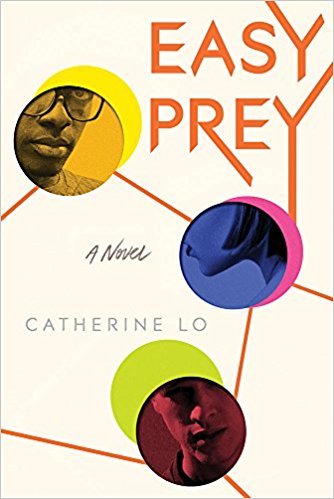
Only three students had access to a teacher’s racy photos before they went viral.
There’s Mouse, a brainy overachiever so desperate to escape his father and go to MIT that he would do almost anything, legal or not. Then there’s Drew, the star athlete who can get any girl’s number—and private photos—with his charm but has a history of passing those photos around. And finally there’s Jenna, a good girl turned rebel after her own shocking photos made the rounds at school last year, who is still waiting for justice.
All three deny leaking the photos, but someone has to take the fall. This edgy whodunit tackles hot-button issues of sexting and gossip and will have readers tearing through the pages to reach the final reveal.
FURTHER READING
- What Hollywood Gets Wrong About Teachers from The Atlantic
- Beyond a Good/Bad Binary: The representation of teachers in contemporary young adult literature by Amy Cummings
- Teacher student romances are so common in stories that this is its own entry at TV Tropes.
Header painting: Elizabeth Armstrong Forbes – School is Out
